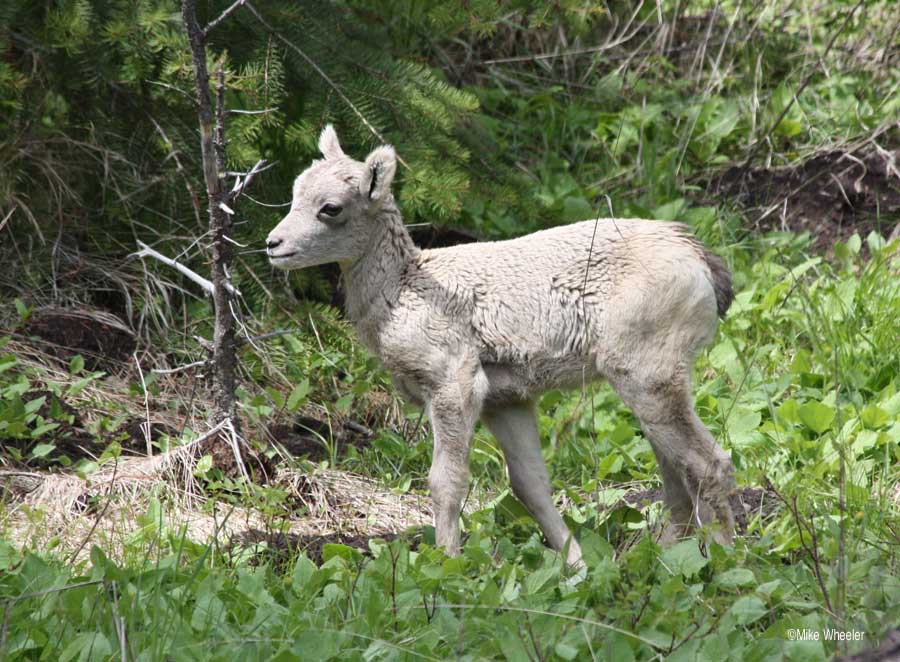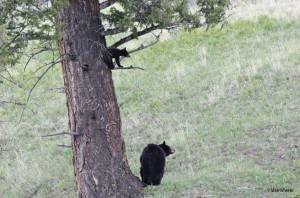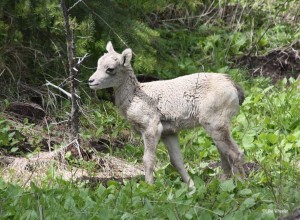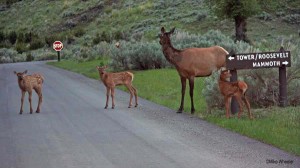
By Ruffin Prevost
CODY, WYO. — Yellowstone wildlife watchers cherish spring and early summer as a prime time to see baby animals with their mothers. More than 60 different species of mammals live in Yellowstone and Grand Teton national parks, and they typically give birth in time for their young to take advantage of summer’s bounty.
Late May and early June can be a great time to spot Grand Teton and Yellowstone wildlife caring for their young. But photographers and wildlife watchers should take extra care to avoid getting too close to baby animals. Mothers of all kinds — from bears to birds — will zealously defend their young. Getting too close can stress the babies and prompt an aggressive defense from parents or other members of a group.
Reader Mike Wheeler has sent in some of his favorite photos of Yellowstone wildlife with their young. If you have a great shot of baby animals from Yellowstone or Grand Teton — or any other favorite image — send it in and we may share it with readers.
In the meantime, now is a great time to get into the parks and see Grand Teton and Yellowstone wildlife families taking advantage of warmer weather and more abundant forage.

Black bears
Black bears are common among Yellowstone wildlife, and are most often seen around Mammoth and Tower. Typically after their fourth year, black bears will mate from May into early July, and the female’s egg will only implant in her uterus if she is healthy going into hibernation.
Black bears in Yellowstone usually give birth to one or two cubs (but sometimes three) from the middle of January into early February, during hibernation. The mother becomes semi-conscious as she delivers tiny babies that are hairless and toothless. She will nurse the cubs in her den for another two months.
For their first summer, fall and winter out of the den, cubs stay with mom, but strike out on their own the next spring.
Black bears are adept tree-climbers and will often seek refuge in branches when threatened.
An estimated 500–650 black bears live in the park, putting them among the Yellowstone wildlife visitors can most often see from a roadside. In 2000, park biologists fitted a dozen black bears with radio collars to learn more about the role they play among all the predators in Yellowstone’s northern range.

Bighorn sheep
Bighorn sheep are a favorite species among Yellowstone wildlife watchers, especially during the late fall and early winter rut, when males challenge each other in a horn-crashing contest for dominance.
Along with mule deer, white-tailed deer, bison, pronghorn antelope and moose, bighorn sheep are native ungulate species in the park. Mountain goats are not native Yellowstone wildlife.
An estimated 250-275 bighorn sheep live in Yellowstone, and they are most commonly spotted along the McMinn Bench of Mount Everts. You might see them during the summer near Mount Washburn and Dunraven pass, or throughout the year between Mammoth Hot Springs and the park’s North Gate.
Ewes typically give birth to a lamb (usually only one) in May, often choosing a protected spot in high cliffs that is not easily reached by predators. Lambs are up and on their feet the day they are born. They are among the most sure-footed of all Yellowstone wildlife, and can climb and follow their mother within a week of birth.
Both male and female bighorn sheep have horns, but adult males sport horns that curve in a great circular arc. To assert dominance and determine mating rights, males smash their heads together during rut in what is one of the most amazing displays among all Yellowstone wildlife.
After an outbreak of disease in 1982, bighorn sheep numbers in Yellowstone dropped by 60 percent. But since 1998, their numbers have grown by at least 7 percent annually.

Elk
Thousands of elk live in or migrate through Yellowstone, where they are an important prey species for grizzly bears, wolves, cougars and other predators. They are the most numerous large mammal among all Yellowstone wildlife.
Elk mate in September and the first half of October, with bull elk bugling to signal their intent to females and to challenge other males. Bulls will spar by locking antlers and pushing each other around.
Much larger than deer, a bull elk typically weighs about 700 pounds and stands five feet high at the shoulder. An elk calf is typically about 30 pounds at birth, with cows bearing young in May and June.

Estimates over the last several years for the total number of elk in the park have ranged from more than 5,000 in the winter to up to 30,000 from more than a half-dozen large herds in the summer.
The reintroduction of wolves into the park has changed the dynamics of how several Yellowstone wildlife species interact, including elk. Researchers have studied changes in everything from how elk feed on willows along river banks to the ratio of calves born to cows as a result of the return of wolves to the area. But climate, including total precipitation and winter temperatures and snow levels, is the single factor that most affects total elk numbers.
Thanks to Mike Wheeler, who contributed photos for this story.
Contact Ruffin Prevost at 307-213-9818 or [email protected].
